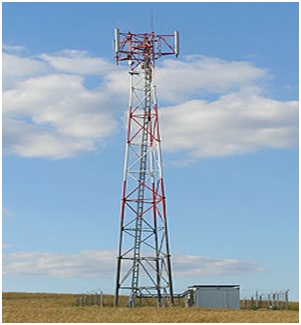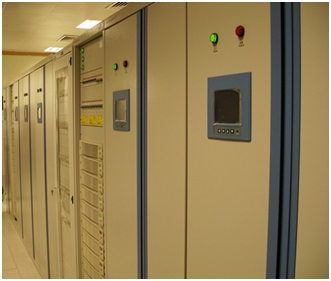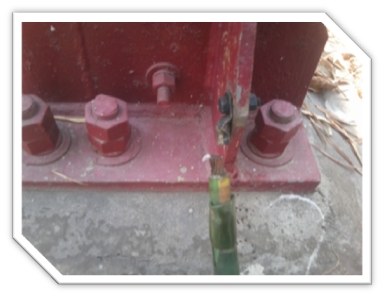Home › Electrical Engineering Forum › General Discussion › Telecom Power System: The Current Status Quo
- This topic has 3 replies, 3 voices, and was last updated 11 years, 5 months ago by
aalokj.
-
AuthorPosts
-
2013/03/08 at 12:31 pm #10868
Steven Mill
ParticipantWhen it comes to geographical distribution of power, the third world is defined by non-uniform availability of power. Owing to bad governance and lack of policy implementations, there is vast room for improvement in power systems of the third world. Massive outages are now considered habitual in countries like Pakistan, India and Bangladesh etc.
The load management system and the debt payment to IPPPs is disruptive, leading to a pandemonium state when it comes to availability of electricity. This has a massive toll on the industry particularly, the telecom industry. The power conundrum has affected diverse sectors including technical setups like telecommunications. They have taken a serious hit due to the power crisis.
Dilemma of Asian Telecom Setup
While Telecom business model was a successful one before, accommodating power losses has become a serious issue. This is contradictory for the Telecom sector since there is room for investment owing to major installations across the regions. They also have vested profits in areas where access was impossible before.
The Telecom sector enjoys a massive demand which is now being compromised at the end of inconsistent power supply. This becomes predominantly apparent when we talk about BTS sites and their incessant power dependency. To expand their reach, they would also need power supply insurance which isn’t there to begin with. So what started out as a lucrative venture is now turning to issue ridden non sustainable model.
The survival of telecom sector is impossible to imagine without effective power supply and load management. As stressed earlier, bad governance is also a big part of the issue. Further the telecom sector is also dependent on investors, and with a crisis of this magnitude, their confidences are on the lower side. That being said, the issue of telecom sector becomes multifold when we talk of negligence. The power failure is an issue that will remain there, but there are intermittent issues which also arise over a period of time. It is owing to these issues in addition to the looming threat of power crisis that results in negative monthly cash flows for Telecom companies.
When it comes to the argument of checks and balances, they are there in the form of Energy Audits. Their efficacy is hindered by the fact that these issues have been neglected or ignored, leading to the negative scenarios. It is important to move forward and highlight these issues in a priority based order. This would allow comprehending them better.
Generator Star Point UnEarthed
An avenue of interest is that of the Generator star point Earthing. The connection of star point to earth is a fundamental principle. The underlying advantage is obtained if a neutral resistor is used in the sense that we can monitor the system. As far as the basic science is concerned, this resistor would remove power surges that may occur by limiting the neutral current. The rudimentary knowledge of circuit’s dictate that fault currents cannot pass through a system since it has earth fault relays and circuit breakers.
In the case of a major fault, the neutral resistor is damaged due to overheating allowing heavy currents to flow through the system. These transients result in large oscillation resulting in frequency fluctuations. Traffic nodes are the most sensitive part of Telecom Setup at any cell site. These nodes are protected by sophisticated Power Filter Units (PFU).
In the event of an earth fault, surges might penetrate into the system leading to restart of traffic nodes. These incidents could be avoided by installing an over temperature detection facility for Neutral Earthing resistor. This over temperature detection topology could limit the fault current as soon as temperatures exceeds a certain specified threshold thus protecting the neutral resistor and sensitive equipment such as traffic nodes at RBS sites.
Multiple Earthing and Third Harmonics
While talking about multiple earths, such a system may cause 3rd harmonic currents to circulate along the neutral earth path. The side effects associated with this distribution is that it could cause the cables to heat up. This leads to a domino effect where the protection system associated with the RBS sites is compromised. This is such a major issue that it has ruffled up major Telecom vendors and solution providers like Ericsson, Huawei among others.
Unconnected/Loose Neutral
Another problem that can be identified is that of the loose neutral. This can become a nuisance by causing damage through excessive heat production. The impact of the heat is such that insulation is worn off and there can be damage in the vicinity too. So why does this phenomenon occur? This issue which is also known as arcing would happen on the account that the loose wire is unable to make contact at all times. The intermittent connect/disconnect is a big problem.
This issue is caused by some environmental factors like a strong wind which can cause the supply wire to move. Other factors that can assist in this process are that of heat and the mismanagement of load through mechanical issues. When this connection doesn’t form, an arc would. This leads to large fluctuation in the electric supply.
The first thing that is affected by this is the sensitive apparatus that is part of the BTS, for instance traffic node. Yes, one is able to cater to this through PFU’s but at times such measures are futile. So, the real and practical solution would be directed audits for such neutral wire issues. The image below shows how much damaging effects can winds cause to neutral and earthing wires at BTS sites. These issues need to be taken care of to avoid any incidents such as electric shock, burnouts of cabinets and large power surges.
Need of the Hour
From the above text, it is quite apparent that there exists as a solution oriented model which may work out for the troubled telecom industries at the end of the day. The issue of lack of government based incentives and that of power crisis shall continue. However, one can work on the issues that are associated with the power system. Through scrupulous Energy Audits Telecom Companies can avoid outages that arise because of time generated issues as discussed above. This may take time to develop, but is generally considered to be the need of the hour if the companies want to stay afloat in the Asian market.
What do you think about all these issues? Do you agree? Did you experience one of them?
2013/03/17 at 2:39 pm #13129Anonymous
Guesttelecom setup is not so easy. difficult task but interesting.
2013/03/21 at 1:15 pm #13123Anonymous
GuestI never though that Power Issues are so critical for Telecom Setup. A very good article. But i felt the article was bent towards Asian/African Telecom Setup.
Does the Global Telecom Setup Suffers from the same challenges?
Do the European & American Telecom Giants are also agitated by these issues?Regards
2013/09/02 at 12:47 pm #13359aalokj
Participantin Telecom setup every site has DG Power Set. do you have any idea how to save power at Tower site. during when power off & Retardation of DG use…
In present scenario when power cut DG Run automatically. After 4 Hr Running DG. we giving DG Rest to half hour & after we continue start that. we have also Battery Bank in back up.
do you have any suggestion so plz share here…
-
AuthorPosts
- You must be logged in to reply to this topic.


